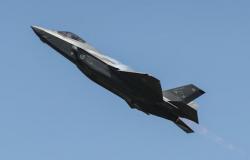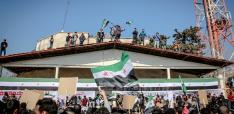The New Military-Industrial Complex and the Israeli-Hamas War

Moshe Alamaro unpicks the history of the contemporary global Military-Industrial Complex and proposes action to tackle it.
The CEO of Raytheon, the largest defense contractor, openly declared immediately after the October 7 start of the Israeli-Hamas war that the war is good for business. When President Biden requested funding in October for Ukraine and Israel, part of the plan was to restock Israel’s Iron Dome. Raytheon, manufacturer of this rocket defense system, stood to benefit. To quote him, "I think really across the entire Raytheon portfolio, you're going to see a benefit of this restocking. On top of what we think is going to be an increase in DOD top line (Guardian 2023).
In his farewell address of 1961, President Dwight Eisenhower prophetically warned against “the military-industrial complex” and called on citizens and government alike to resist its power:
we must guard against the acquisition of unwarranted influence, whether sought or unsought, by the military-industrial complex. The potential for the disastrous rise of misplaced power exists and will persist. We must never let the weight of this combination endanger our liberties or democratic processes. We should take nothing for granted. Only an alert and knowledgeable citizenry can compel the proper meshing of the huge industrial and military machinery of defense with our peaceful methods and goals, so that security and liberty may prosper together.
Two decades earlier, America’s entry into the Second World War had been a triumph for the Keynesian theory that postulated that government demand could and should restore the economy and save capitalism from itself following the Great Depression. The United States’ investment in the war effort was one of the largest government investments in history. The war got the U.S. out of the Great Depression; but just as the war required the development of a new armament industry, after the war the armament industry required wars. Indeed, the U.S. has been almost continuously involved in wars since then.
The military-industrial complex, which obviously encourages over-production of arms leads to the use of overwhelming, heavy-handed, wasteful, and often unnecessary brute force, creating unintended and frequently disastrous consequences. Consider that during World War II, roughly 3 million tons of explosives were used against the Axis powers. During the Vietnam War, however, 4 million tons were used against a much smaller enemy force, much of it a guerrilla army spread out across densely forested land. Even so, Vietnam was victorious.
The diplomat and Sovietologist George Kennan, also a conservative, who is credited with predicting the coming Cold War in 1945, called the country’s attitude toward war an “addiction”:
The habit of spending from two to three hundred billions of dollars annually on preparations for an imagined war with Russia ― a habit reaching deeply into the lives and interests of millions of our citizens . . . including industrial workers, labor union officials, politicians, legislators, and middlemen . . . has risen to the status of a vast addiction of American society.”
Trying to overcome this addiction, Kennan said, “would encounter the most intense resistance and take years to accomplish even if the Soviet Union had in the meantime miraculously disappeared from the earth” (December 12, 2013).
Following this train of thought about our addiction to war, journalist Russ Wellen wrote:
In other words, [Kennan] foresaw how unlikely it was that the United States, however flush with victory over the Soviet Union (or more accurately, it was not) would issue itself a “peace dividend,” improving the economy by spending less on defense. While U.S. military spending would decrease during the decline of the Soviet Union, as we all know, it went through the roof after 9/11. As with the Soviet Union after World War, the rise of Islamic terrorism arrived just in time to infuse the military-industrial complex--not to mention the American psyche--with the adrenaline boost in fear they both thrive on (December 12, 2013).
Traditionally, the ultimate rationale for war, if any, has been the acquisition of land and resources, but increasingly the business of wars for the United States and Western powers has become the production and selling of arms for others to fight with. Since the debacle of the Iraq and the Afghan wars, the U.S. has become somewhat reluctant to enter into military conflicts but has not ceased to be involved in, foment, and sell arms to regional wars around the globe. The largest arms exporter in the world, the U.S. is responsible for 39% of the global export market (2020).
One may say that the money pouring in to increase employment and economic development through arms production could be better invested in infrastructure buildup, global climate change abatement, and low-cost housing. Such investment, however, would be widely spread and diffused through the entire economy without the many visible regional results that produce media publicity. In contrast, when new industrial armament facilities are erected in local regions, the military-industrial complex makes sure to point out the economic development of such industry in those specific locales.
According to researcher William Hartung, a senior research fellow at the Quincy Institute for Responsible Statecraft, the military-industrial complex employs about 700 lobbyists, two for each congressman (March 6, 2012).
The U.S. military-industrial complex has set an example for numerous such industries in smaller nations. Turkey has become the world’s largest manufacturer of drones, and Iran recently changed from being a purchaser of weapons to being an exporter, providing arms to Russia for its Ukraine war. Similarly, Israel exports tanks to Europe. In fact, Israel, although smaller than the U.S., has the world’s highest arms exports per capita, twice that of the U.S.
A glaring example of the drive by the military-industrial complex to sell is the case of the controversial F-35 combat aircraft program, the cost of which is estimated as $1.7 trillion (trillion with a T), the most expensive military program in history. MIT professor and activist Noam Chomsky argues that the military aid to Israel has ulterior motives: providing state-of-the-art weaponry brings invaluable experience for arms that are used live in Israel for the first time. Indeed, the F-35 was sold to Israel, and Israel used it (over Syria) for the first time ever in combat in 2018, confirming Chomsky’s assertion.
New arms production such as that of the F-35 is largely futile, in the opinion of many experts, since it cannibalizes or replaces previous generations of the same weapon that in some cases are still better than the new armament. A glaring example is the retiring of the combat aircraft F-22, the performance of which in some respects exceeds that of the new F-35 (The National Interest June 4, 2021). F-35s had until recently difficulties flying through thunderstorms (The National Interest April 1, 2024).
In addition, local manufacturing of arms by nations for their use rather than for export creates pressure to use their weaponry for unnecessary overkill. In the Hamas war, tens of thousands of tons of explosives have been dropped over Gaza, and 32,000 Gazans had died by the end of March, 2024, amounting to more than 1% of Gaza’s population; 60,000 were injured and maimed; and the near-complete destruction of Gaza infrastructure occurred, all without clear military value to Israel (January 8, 2024). Apparently, the overwhelming force by Israel is due to the rage the Israeli public feels for the atrocities inflicted by Hamas on October 7, 2023.
An international treaty aimed at curbing the global military industrial complex is possible: it would follow in the footsteps of the international nonproliferation of weapons of mass destruction (WMD) treaties that include the Treaty on the Non-Proliferation of nuclear weapons (NPT), the Chemical Weapons Convention (CWC) and the Biological and Toxin Weapons Convention (BTWC).
It is hereby proposed that military-industrial complex worldwide be curbed in phases over 10-20 years and that the major superpowers--the US, China, and Russia--initiate such a treaty.
According to the US. Department of State, about 2-2.5% of world GDP, estimated as $100 trillion annually, goes to military expenditure. Such a treaty to curb the global military-industrial complex could involve planning on how to use the saved funding for global initiatives such as for abating global climate change, preventing pandemics, infrastructure buildup and addressing world hunger. To prevent economic disruption and to overcome the resistance of the arms producers, the same industries that now manufacture arms will be tasked with these peaceful new goals.
Moshe Alamaro, a former naval officer in the Israeli Defense Force, is a retired atmospheric scientist at the Massachusetts Institute of Technology.
Photo by Farid S


